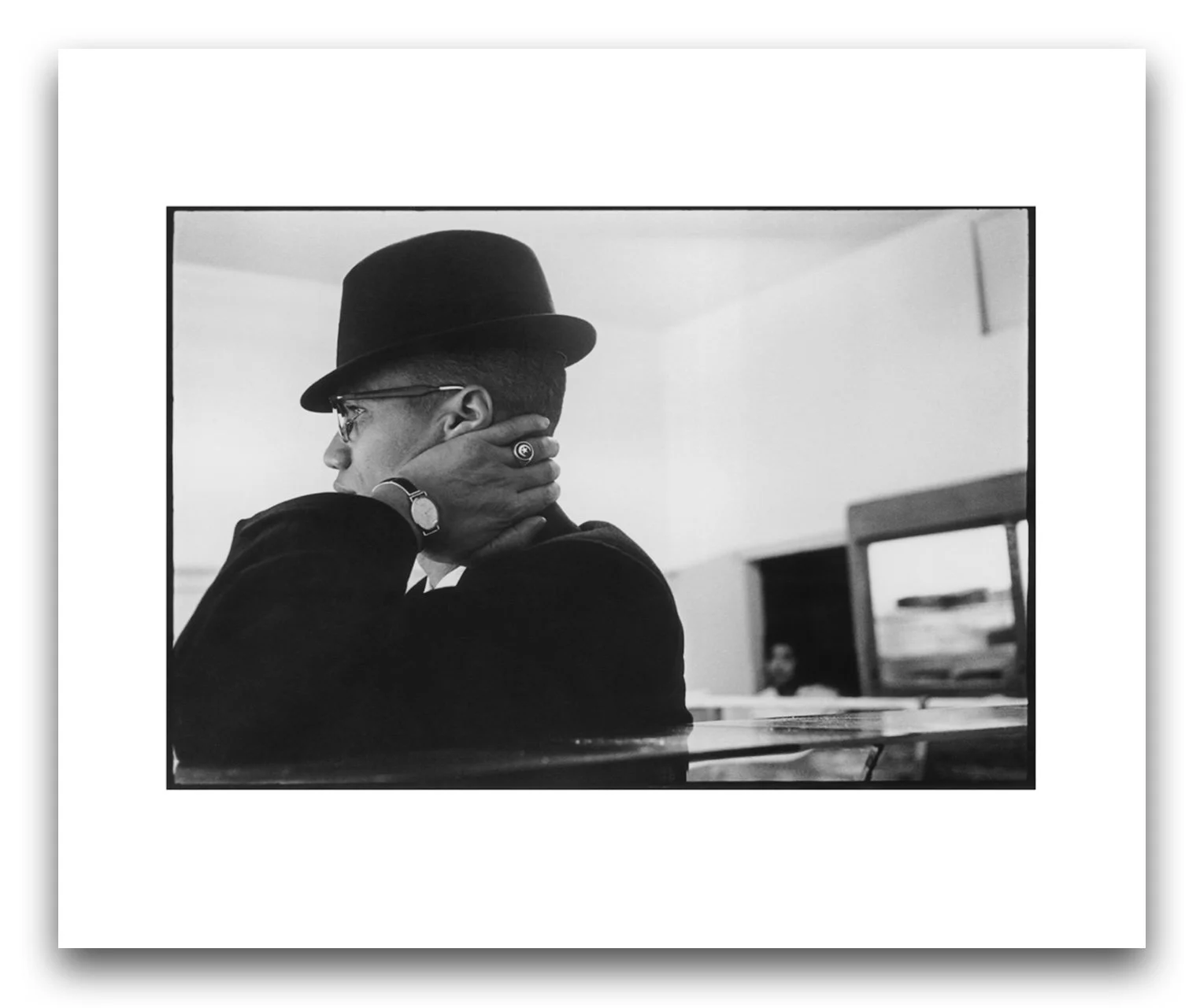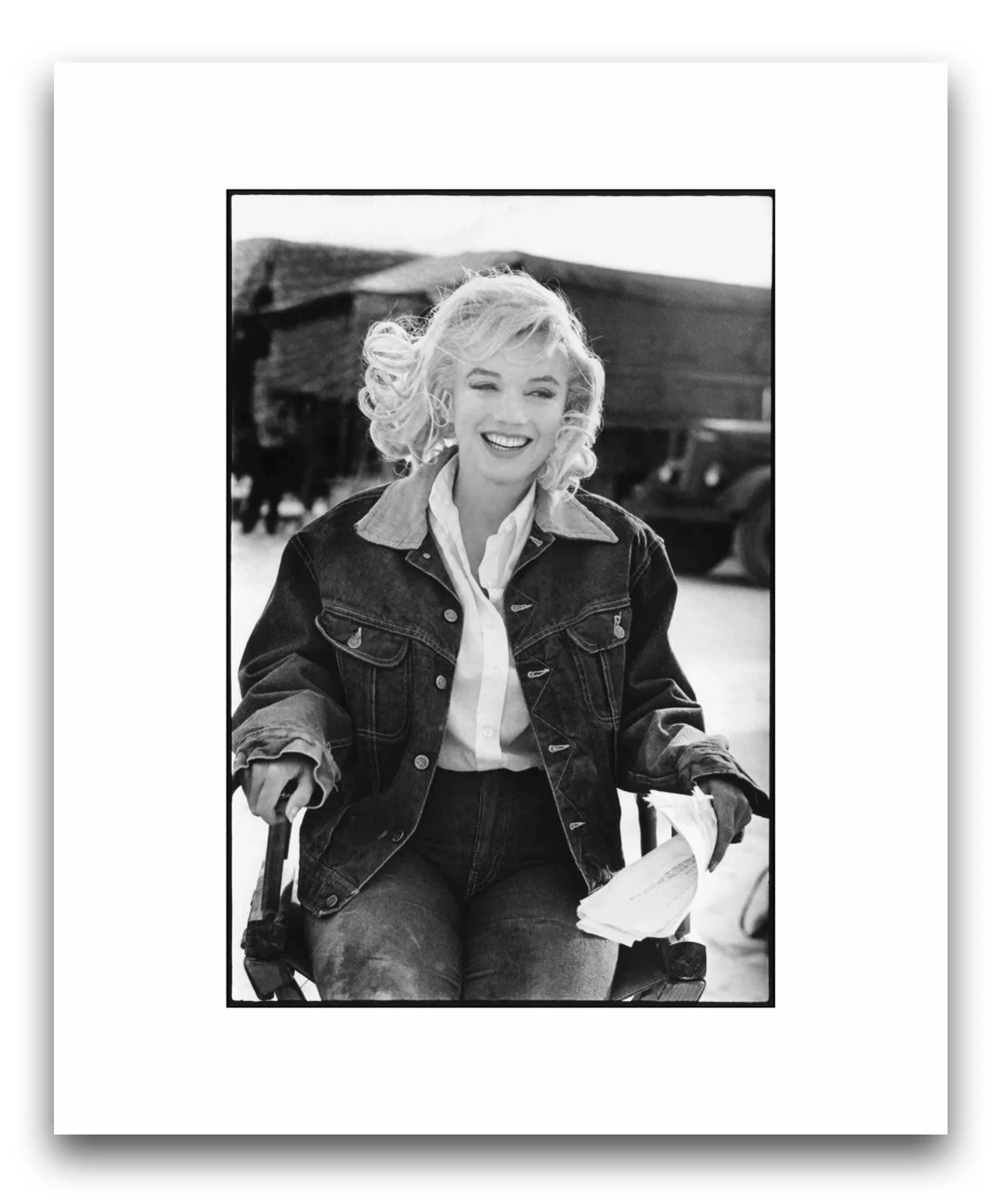Limited edition print: Marilyn Monroe on the Set of 'The Misfits'. 1960.


Limited edition print: Marilyn Monroe on the Set of 'The Misfits'. 1960.
Museum grade archival pigment print on cotton rag baryta paper
10x12 inch print, Edition of 250
Individual printed by Eve’s own award winning bespoke printer, Danny Pope
Estate stamped, hand editioned and captioned on the reverse
Free worldwide DHL shipping
Notes:
1) Each print is created individually in Italy by our master printer Danny Pope. Your order will be shipped within 14 days. Shipping takes 1 - 2 days once dispatched.
2) We currently only charge in £, but your Visa, MasterCard, Amex, Paypal or ApplePay will work whatever currency you use. Your bank may charge you a small transaction fee (2 - 3%).
Orders FAQ
-
What’s Important About the Thing: New Versions of Eve Arnold Classics by Danny Pope
by Francis Hodgson
The reasons for reproduction and the methods used both have large implications on the results. Reproductions are not neutral, to be judged only by their mimicry of the older versions. They have, as the great printer and historian of printing Richard Benson put it to “find [their] own form in the materials and context of [their] new physical statement”.
There is, and for very good reason, a large market for good prints by Eve Arnold. Not only a pioneer, but a pioneer with a wonderful eye, she made pictures which far outlast the particular or the newsy moment they were made for. But as with so many photographers, her good vintage prints are in short supply. And, crucially, there has been a revolution since Arnold made the majority of her work, a revolution called digital. Arnold’s estate has turned to Danny Pope to think through the conundrum: how to make reproductions when the path to replication for so many reasons is closed?
Pope used to work with Arnold. He took her instructions, worked (when traditional darkrooms still existed as the main environment in which fine prints could be made) from her approved and annotated good versions of prints. He discussed better or worse results with her. That already gives him an inestimable advantage in the task at hand. He has the echoes of the author’s voice in his ear – and we don’t. But Pope was not just a printer she happened to have used. He has been a specialist fine printer for years: his job was to get more out of prints than his client photographers could get themselves. Among other fancy skills, Pope was among the best in the world at printing Cibachrome, prints made from transparencies with their own peculiar presentation. Cibachrome is rare and even obscure technology now, like hand engraving photographs on wooden blocks. But, like that, too, Cibachrome involved adjustment and a new reading to give its best effects. Pope was already used, in other words, when Arnold was still with us to sign off the results, to adapting and interpreting for the best outcome. His job was never slavishly to copy an existing model. If Ansel Adam’s dictum that the negative is the score and the print is the performance is to make sense, it must allow that the performance will be adjusted every time. New printing technology is a large element of why that has to be so, and we can understand that. These new prints are a terrific new performance of Arnold’s negatives. Get that firmly, and we can decide whether to like them and how.
Pope wrote me a succession of long e-mails to explain what he was up to with these new Arnold prints. One in particular reads almost as a poem about printing – maybe a hymn to it. While trying to put his processes and methods into words, Pope wrote in part as follows:
I can control the light with maths rather than my hands.
In analogue one could control the hue of shadow and highlight with ones hands, blocking off below the lens with card and then changing the filtration system.
A rather clumsy and obviously very difficult performance when trying to replicate what was done before, on top of the minute changes in chemical temperature, or raging of chemistry.
Hence many prints before the ‘eye’ was satisfied.
Now many years later, those prints, ‘proofs’ are being mastered, those little indiscretions of waving hand, or clumsy filtration are rectified.
The only thing that cannot be rectified of course is if the transparency blipped with light heat or the enlarger knocked and the grain on the final print is not sharp.
the cloning of the grain and the gentle caress of the light and its hue, albeit in this digital form, combines what you asked about the small amount of photoshop files and why i need to protect the grain throughout the process until a print is created.
I still devour the same amount of test strips and proof prints, I never trust a screen, and I have to live with the finished print for a while before i am satisfied.
Elsewhere in the same letter, Pope wrote this lovely sentence:
In this body of work, I have unconsciously cloned the special relationship between the printer and the author.
That says it nearly all. I went looking for more expressions of Richard Benson’s thinking about these matters, and I found he had given a long interview to John Paul Caponigro (son of the great photographer and teacher Paul Caponigro). “If you try to reproduce a picture you can’t get it to be the same,” he said. “If you can’t make it the same what you have to do is you’ve got to figure out what’s important about the thing. And you have to figure out the means by which the important thing is made clear in the original object. And you have to figure out what the new means are by which you can make the thing clear in the new context.“
So be clear: It’s not a vintage print, maybe lightly creased by the author. It can’t be and it doesn’t pretend to be. It’s a new performance done by her own printer at the height of his powers, but using tools that didn’t exist when they worked together. And one of those tools is memory. On that basis, you can judge it.






